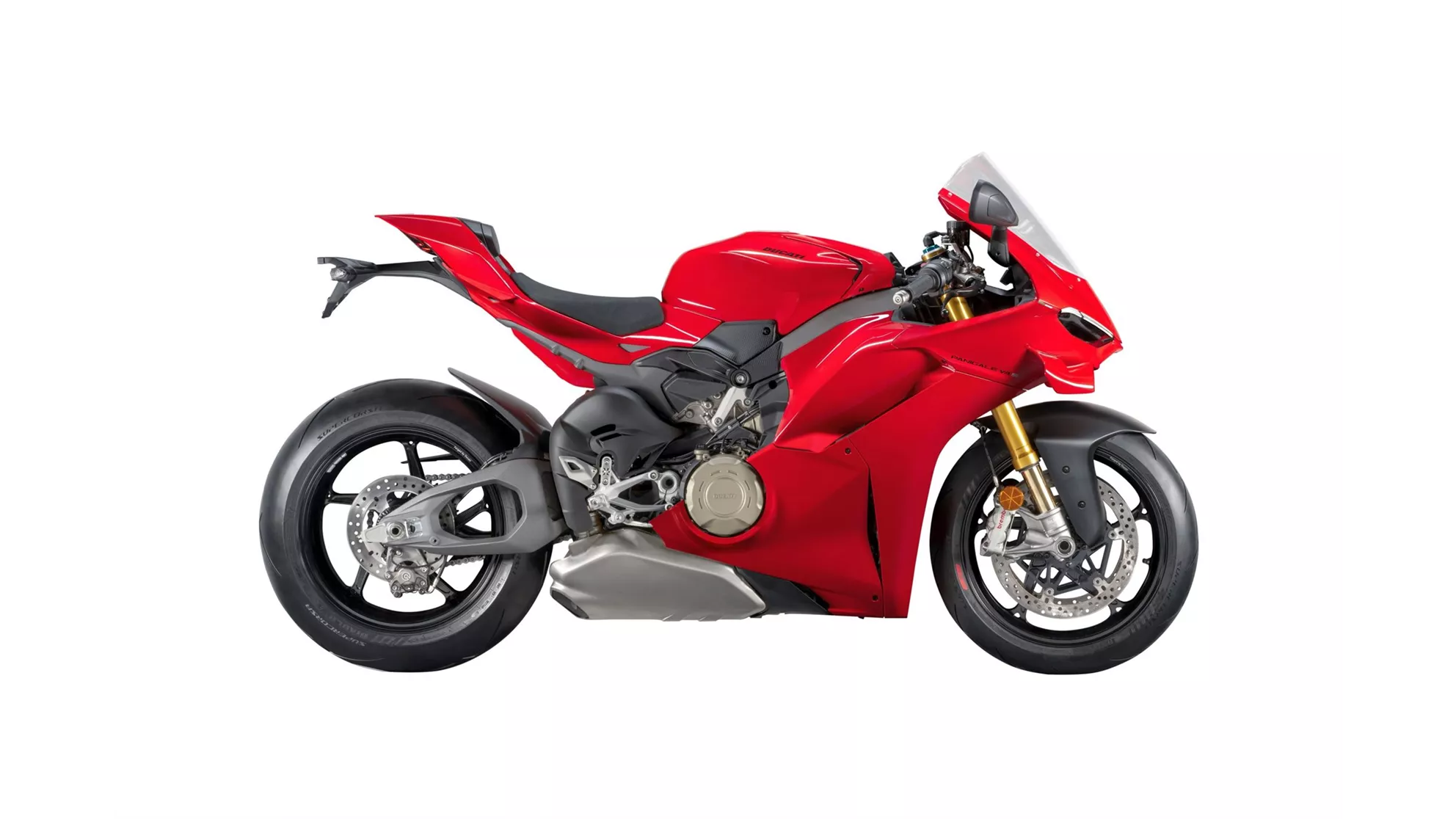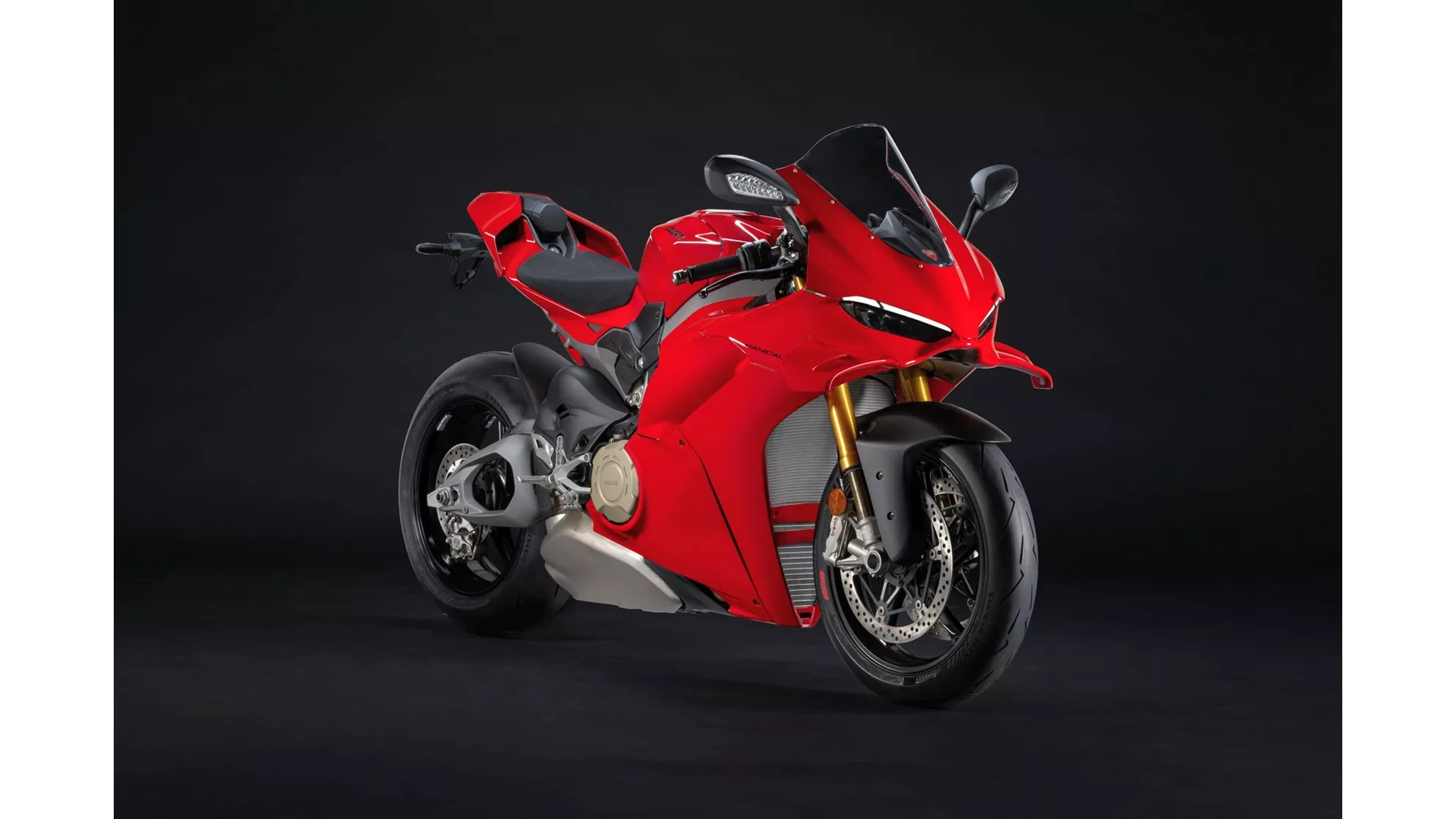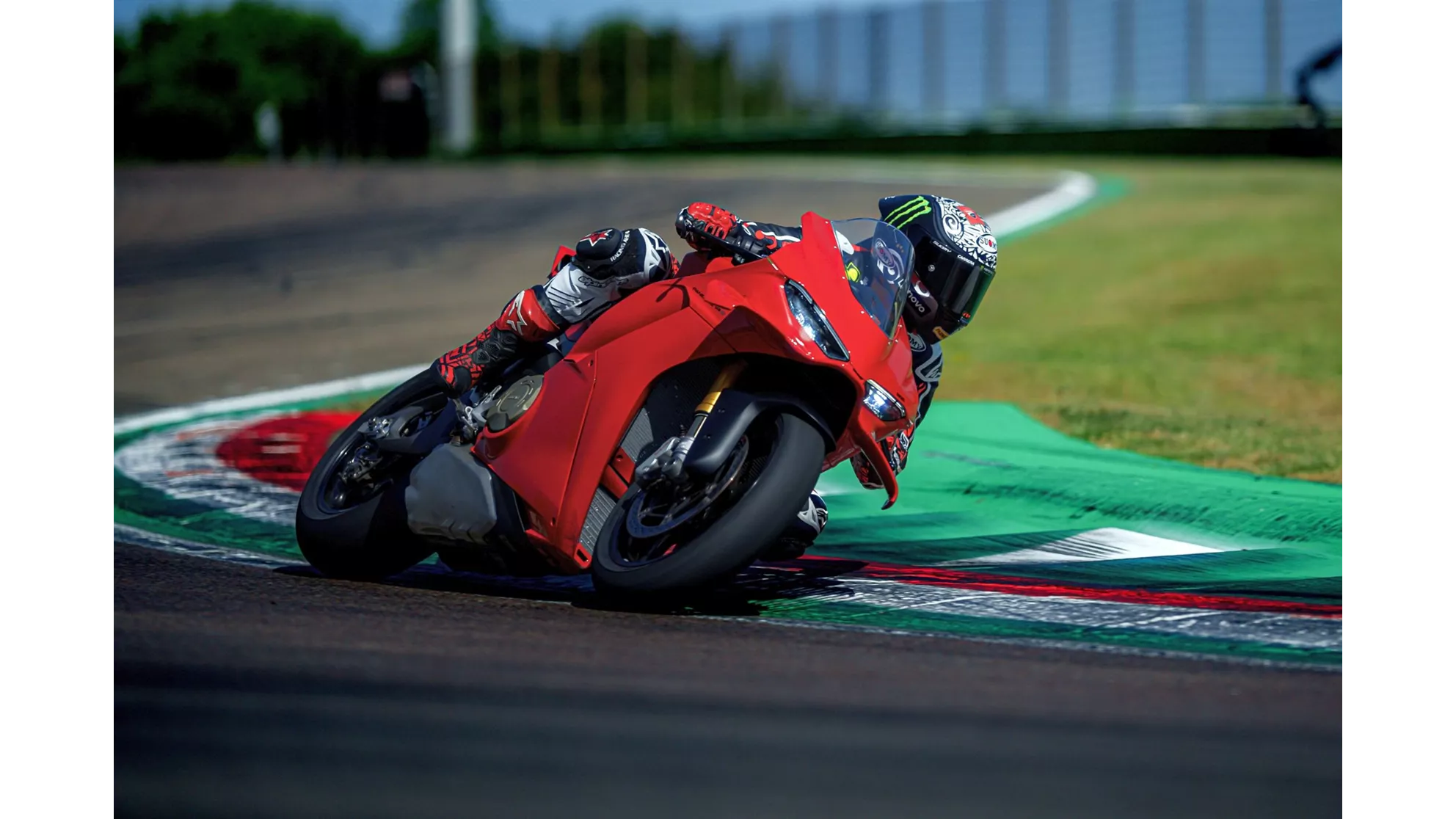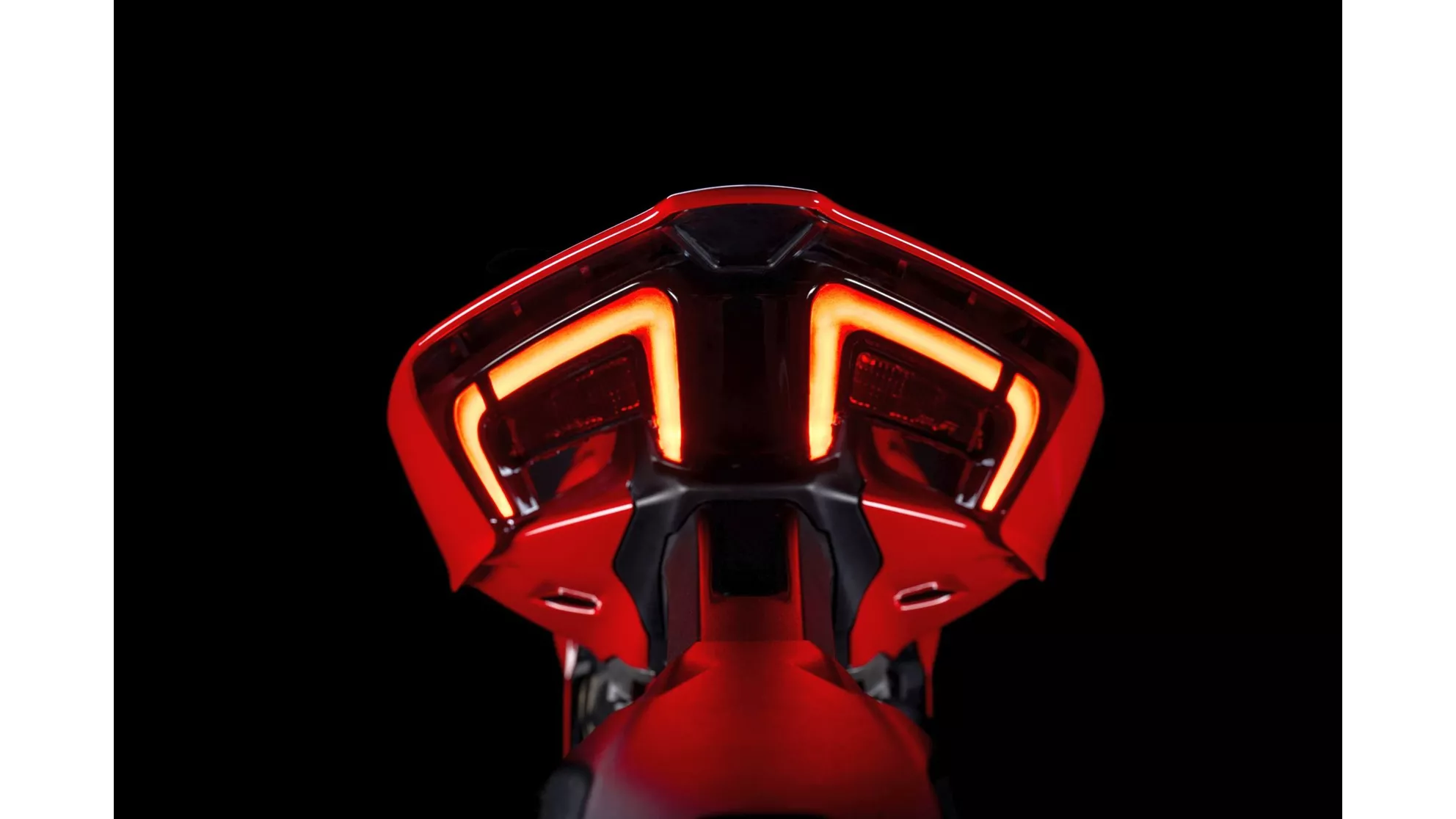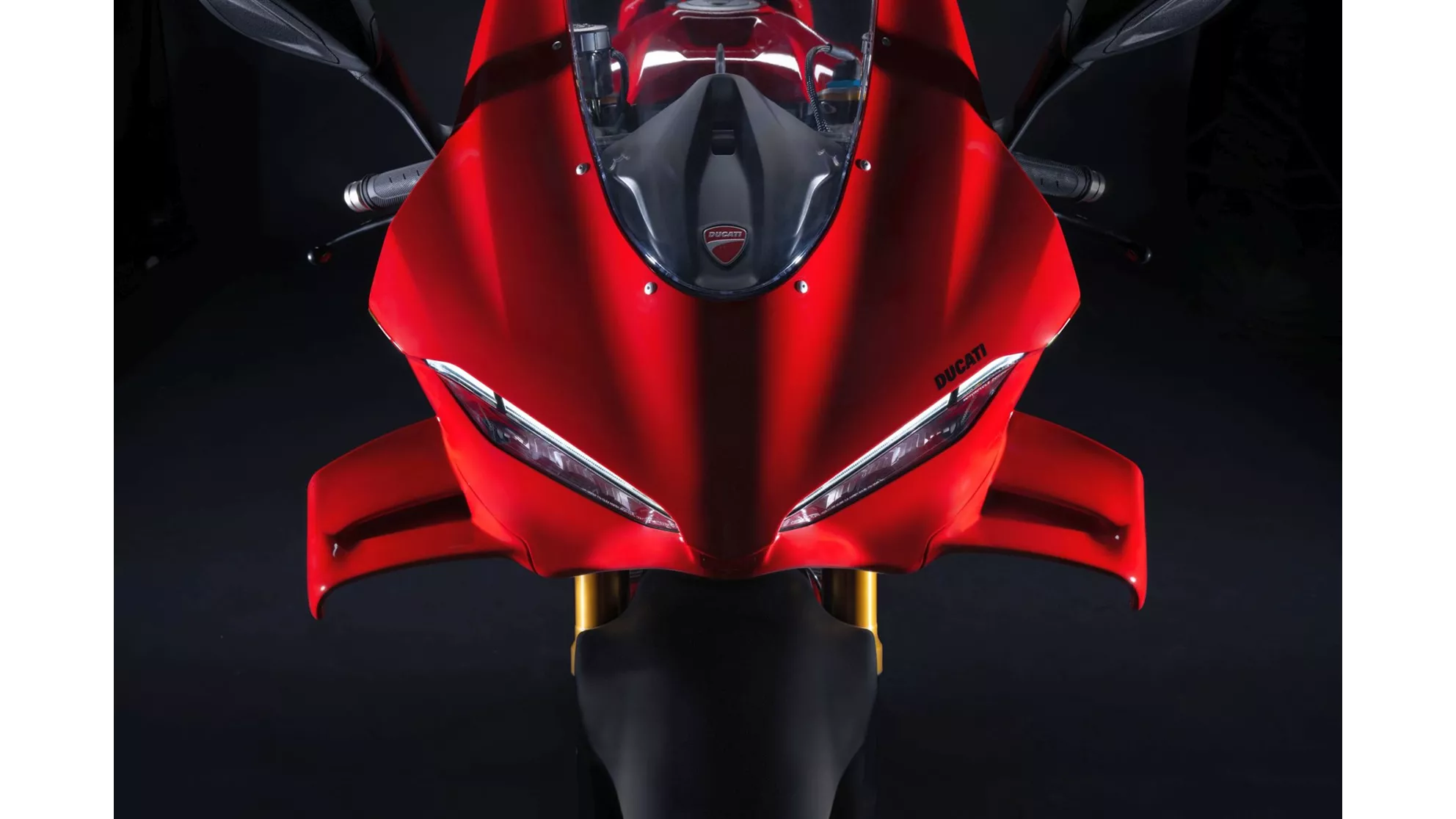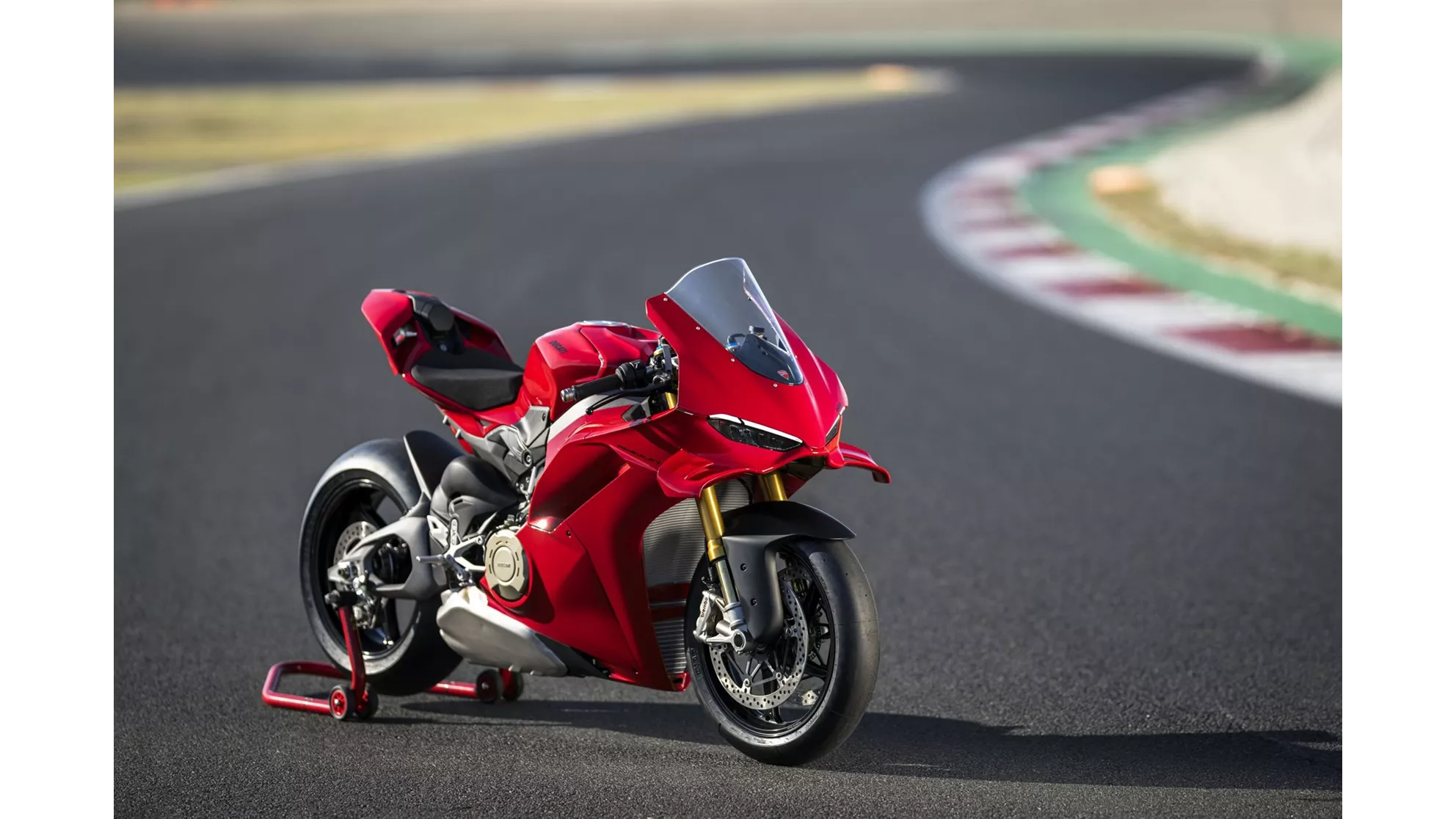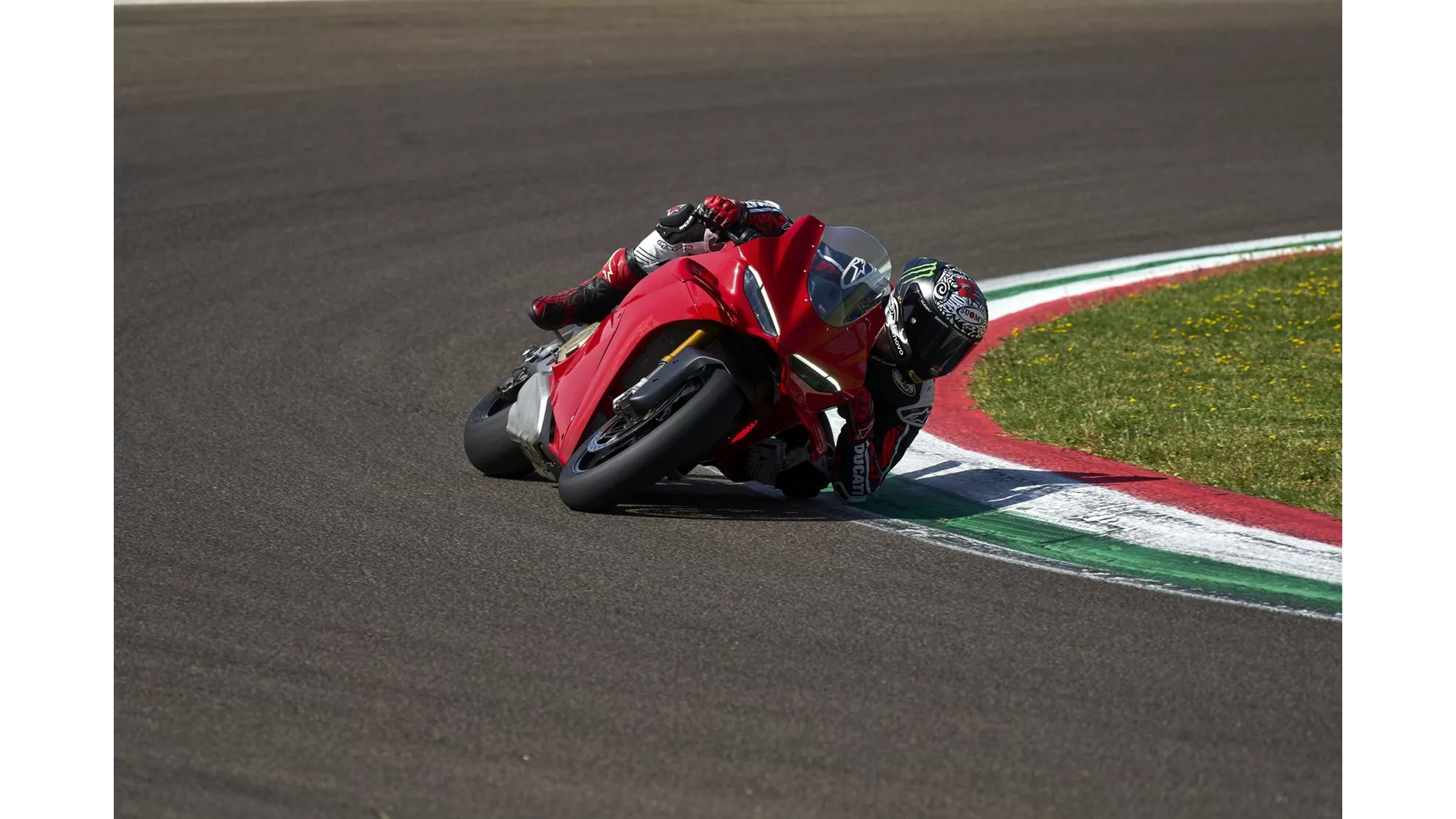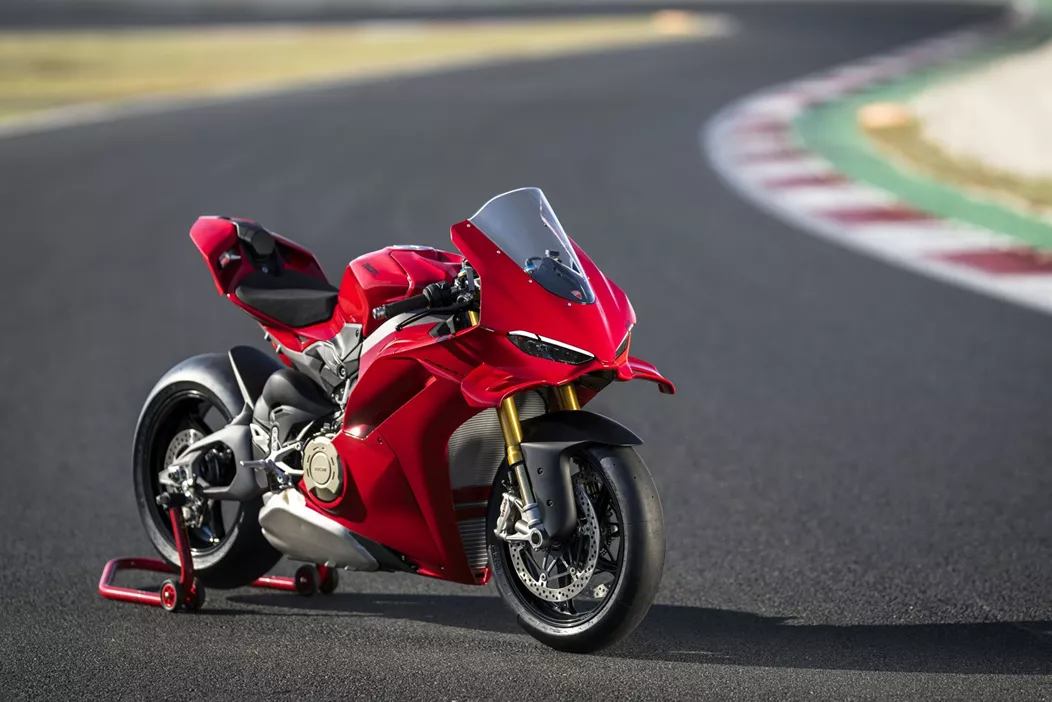The Vallelunga race track near Rome is challenging for both rider and bike. It offers fast and slow sections, banked and slightly declining curves, and plenty of time spent leaning - everything is included. That's why Ducati used this track, among others, to develop the new Panigale V4 S 2025. We have detailed and described its technical details for you HERE. During the riding presentation, we can now put the bike to the test in Vallelunga.
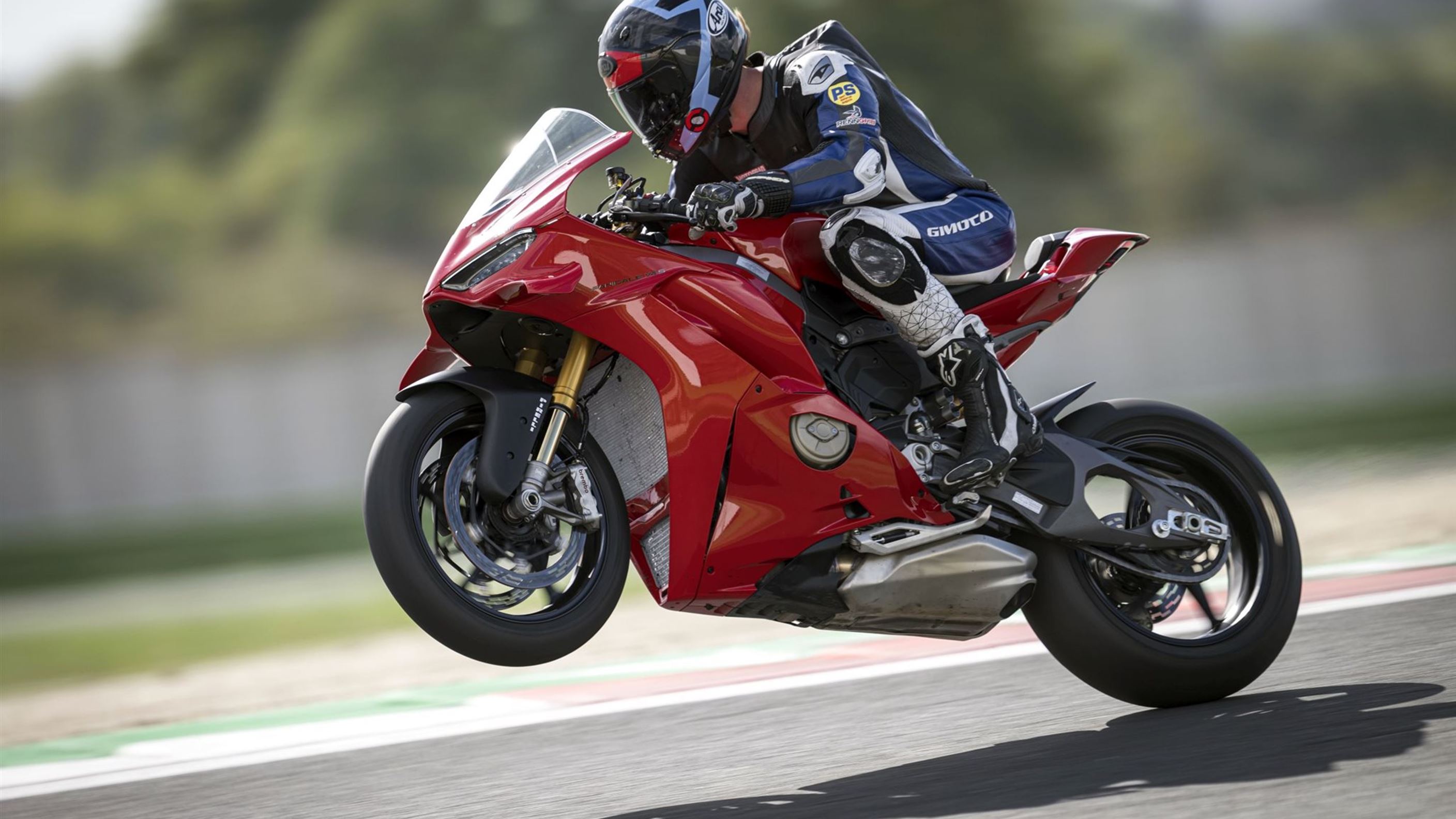
Ducati Panigale V4 S 2025 Test
Stronger, lighter, and more rideable
Ducati ushers in a new era with the fourth generation of the Panigale V4. Without a single-sided swingarm, but packed with plenty of new technology that already fully convinced during the first test ride.
&width=72&height=72&bgcolor=rgba_39_42_44_0&mode=crop)
Fabian
published on 9/16/2024
Ducati Panigale V4 S 2025: Engine and Performance
Let's start with the heart of the Panigale V4 S: the 1103 cc Desmo V4. According to Ducati, despite the elaborate Euro-5+ homologation, it has increased from 215.5 to 216 hp, although the maximum power now occurs 500 rpm higher. The maximum torque, which has dropped by two Newton meters, now requires 1750 rpm more than before. Nevertheless, the V4 is a real grunty bike among the superbikes, not least thanks to its ample displacement, and it pushes relentlessly from mid-range revs, becoming absolutely brutal in the five-digit range. When the LED indicator above the new 6.9-inch dashboard blinks green, you're close to the limiter, and the world around you blurs. After the next gear is engaged via the quickshifter, it continues just as fiercely: the Panigale V4 S reliably pulls the wrinkles off the rider's face even in 2025. Throttle application, acceleration, and shifting - everything works smoothly, precisely, and directly. Only when downshifting from second to first gear does the transmission require a determined impulse to avoid landing in the dreaded neutral.
The Panigale improves in rideability
More important than engine performance, Ducati focused on the rideability of the bike during the model revision, which is why extensive changes were made to the chassis. Firstly, the newly designed ergonomics make it easier to move on the motorcycle and find good support on the tank and seat hump during demanding braking and acceleration phases. Additionally, despite reduced air resistance, there is noticeably more wind protection behind the screen. The Panigale V4 S accommodates the rider in this regard in a way that was previously unknown. Furthermore, its chassis provides a great feel and crystal-clear feedback. The swingarm, now two-armed and reduced in lateral stiffness, the also modified main frame, and the latest generation semi-active Öhlins suspension form a harmonious unit and help the new Pani achieve impressive stability alongside very harmonious steering behavior and plenty of mechanical grip. Good news: The well-known "stirring" of the Duc during hard acceleration in a lean is a thing of the past.
Improvements to brakes and electronics
Even on the brakes, the Ducati has improved. In addition to the maximum performance and absolutely fade-free Brembo stoppers with Hypure calipers and fat 330mm discs, it now features the Race eCBS developed by Ducati and Bosch. This system activates the rear brake during hard braking in the sharpest ABS mode (now there are seven instead of three), which noticeably stabilizes the bike in the initial braking phase. Additionally, the eCBS maintains brake pressure on the rear wheel (of course, ABS-monitored) even at deep lean angles, allowing for better turning. In practice, this means tighter lines can be taken with less effort, and the rear brake is automatically used as if by a professional racer. Switching to the normal Race ABS, the difference is noticeable with slightly less tendency of the Pani to dive inward.
Ducati Panigale V4 S 2025 at the Limits of Physics
Ducati now electronically integrates the DVS (Ducati Vehicle Observe) derived from MotoGP, which is supposed to simulate over 70 sensors without new hardware. The Italians do not reveal which sensors these are, but they do not deny that, for example, based on slip, IMU data, brake pressure, and throttle position, the grip level of the asphalt and the rider's riding style are determined. During the riding presentation, no specific innovations in the form of extended functionality of the assistants are noticeable, but the electronics work overall perfectly and with the highest precision. Even experienced riders hardly notice the interventions of traction and wheelie control, and in the sharp settings, the little helpers operate at the limit of what is physically possible - Wow!
- How much does a Ducati Panigale V4 S cost?
- Here you will find an overview of the price level of new and used motorbikes!
&width=60&height=60&bgcolor=rgba_39_42_44_0&mode=crop)
Ducati Panigale V4 S 2025 - Experiences and Expert Review
Fabian
The updates to the Panigale V4 S hit the mark perfectly in terms of riding dynamics. More stability and better turning may seem like opposing development goals at first glance, but thanks to the switch to the double-sided swingarm, they are united in the 2025 model. The new Pani is lightning fast and now caters much more to hobby racers. However, the same still applies: fun comes at a cost - for the S version tested here, you have to dig deep into your pockets.
More from 1000PS Magazine
Ducati Panigale V4 S 2025 Test Images
Source: 1000PS



































































































